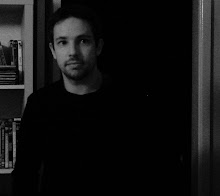Dante and Virgil in Hell. From Roger Caillois, The Writing of Stones
Implicit in the typical objects of the Wunderkammern that drew nature and art together in mutual emulation - the landscape veined in marble, the mechanical duck that swam and quacked, the nautilus shell garlanded in gold - was a personification of nature as an elevated kind of artisan. She (for the personification of nature was traditionally and invariably feminine) was neither Aristotle's humble maker of mundane, functional objects like beds and ships, not the creative, almost divine artist exalted by the Neoplatonic art theory of the Italian Renaissance. Rather, she was the creator of luxury items, as elaborate as they were useless, combining costly materials with fine craftsmanship. Like the goldsmith, the ivory turner, and the painter of miniatures, she was freed from the demands of utility. The virtuoso artisan could play with form and matter, just as nature occasionally "sported" with her ordinary species and regularities.Caillois, like Breton and the Surrealists, was well aware that a rationalist view of nature is an incomplete one, that there's no reason why we should be able to fully comprehend the universe. To attribute to nature a drab utilitarianism based on "the struggle for survival" is a form of anthropomorphism. He argued that "[t]he time has come to invoke 'motives' that are just as pressing on a universal scale, such as profusion, play, ivresse, and even aesthetics, or at least the need for ornament and decoration."
In The Origins of Museums: the Cabinet of Curiosities in Sixteenth- and Seventeenth Century Europe (a book edited by Oliver Impey and Arthur McGregor and accurately described by Lawrence Weschler as "almost insanely recondite"), Guiseppe Olmi relates an anecdote concerning the Italian collector Ferdinando Cospi (1606-1686), whose cabinet was arranged in "in such a way as to exclude systematically all normality" and who "did not consider such things worth collecting unless they were either monstrous or had some bizarre peculiarity." It's an interesting precursor to Breton and Caillois' jumping bean argument (see previous post).
Above all, those beliefs in the habits and miraculous properties of animals which scientific research had by then shown to be unfounded, are still stubbornly reiterated. Evidently the results of scientific investigation could not be totally ignore; but the rational explanation… is usually confined to a few grudging lines at the end of each description. The effort to maintain the greatest possible sense of mystery and wonder is quite apparent. In the same town, and at the same time as [the physician and biologist Marcello] Malpighi was subjecting the vegetable world to microscopic examination, it did not even occur to Cospi to open up a dried Ethiopian fruit to discover the nature of its interior, although the catalogue notes that the fruit rattled when shaken. He still clung to a method of enquiry based largely on vague supposition rather than dissection and empirical analysis.
Cospi's cabinet, c. 1677





























.jpg)


















No comments:
Post a Comment